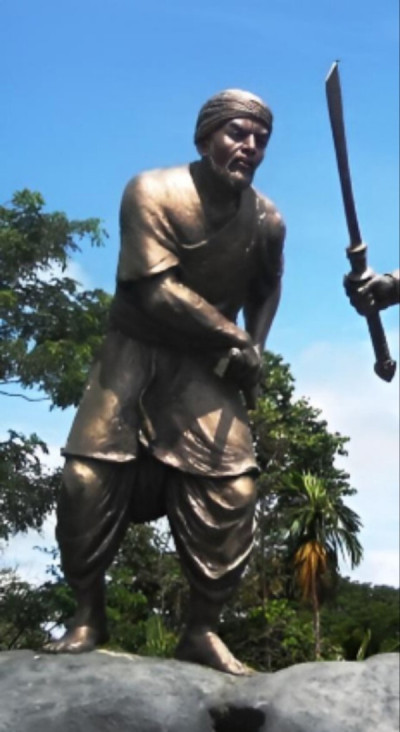Life & Legacy
He is culturally represented as "Hero of Indigenous Muslim Communities in Assam". He was born in an Assamese Muslim family at Dhekerigaon village near Gargaon in Assam.
The title “Bagh” (meaning tiger) was bestowed upon him as a mark of his fearlessness and strength on the battlefield. Ismail Siddique’s strategic brilliance and warrior spirit made him a trusted commander in the Ahom army, particularly under the leadership of the great Ahom general Lachit Borphukan.
Bagh Hazarika’s contribution was most significant during the Battle of Saraighat (1671), where the Ahoms achieved a historic victory over the Mughals. His actions not only safeguarded the sovereignty of the Ahom kingdom but also inspired generations to value courage, unity, and dedication to the homeland.
In this first conflict, the Mughal forces were well entrenched on the hills of the north bank of the Brahmaputra River with a chain of gigantic cannons. Bagh Hazarika suggested a plan on how to disable the Mughal guns to the Ahom General Lachit Borphukan, the royal minister Atan Burhagohain and other generals. Impressed by the plan, they entrusted Bagh Hazarika with command to lead the operation.
That night an advance party led by Bagh Hazarika along with a few soldiers crossed the Brahmaputra by boat and landed on the northern bank of the river and laid in wait for the right moment. While the Mughal soldiers were busy saying their Fajr or dawn prayers, Bagh Hazarika and his soldiers climbed the high embankments and poured water into the Mughal cannons, rendering them useless.
Some time later, the Ahom army announced their advance by blowing the trumpets. In response, the Mughal soldiers rushed to their posts and tried to fire the cannons at the advancing Ahom forces. But, the wet cannons would not work. The Ahom forces used their cannons to the full strength and the Ahom army landed safely on the north bank and attacked ferociously as the Mughal soldiers retreated helplessly.
This victory had proved the courage and valour of Bagh Hazarika beyond any doubt and he was felicitated by the King. Bagh Hazarika thus went down in the annals of Assam history as a highly skilled front ranking military officer.
Today, Ismail Siddique stands as a symbol of Assam’s pluralistic heritage, where people of diverse communities joined hands to defend their land. His life and legacy continue to be celebrated in Assam’s folk songs, literature, and historical narratives.
